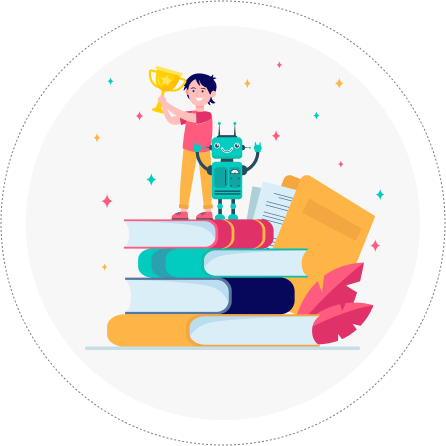C Language
- Home
- / Python Handay
- / C Language
Welcome!
C is a high-level programming language developed in the early 1970s by Dennis Ritchie at Bell Labs. It is widely used for system programming, including operating systems, and for developing various applications. C is known for its efficiency, simplicity, and flexibility, allowing direct manipulation of hardware through low-level operations. It uses functions, variables, loops, and conditional statements to solve problems. With its structured programming approach, C enables dividing tasks into smaller, manageable parts. Though old, C is still popular and forms the foundation for many modern languages like C++, Java, and Python.
Prerequisites
To learn C language, a basic understanding of computer operations and problem-solving skills is helpful. Familiarity with mathematical concepts like variables, loops, and logic will ease the learning process. Knowing how to work with files and directories on a computer is useful. While no prior programming experience is required, basic knowledge of programming concepts such as algorithms and flowcharts can provide a good foundation for beginners.
Learning Objectives
The learning objective of C language is to develop problem-solving skills using structured programming. Students will learn to write efficient, optimized code, understand memory management, and implement algorithms. Key objectives include mastering data types, functions, pointers, arrays, and file handling. Learners will gain the ability to design programs for system-level applications and software development, providing a strong foundation for advanced languages like C++ and Java, and enhancing their logical and analytical thinking.
Course Overview
- Introduction to C
– Evolution of Programming Languages
– Characteristics & Applications of C
– Writing and Executing a C Program
- C Fundamentals
– Tokens, Characters & Comments
– Keywords, Identifiers, and Naming Rules
– Data Types, Variables, and Constants
– Type Casting and I/O Statements
– Operators and Precedence
- Flow Control
– Conditional Statements: `if`, `else if`, `switch`
– Looping: `for`, `while`, `do-while`, Nested Loops
– `break`, `continue`, `goto` Statements
- Functions & Library Functions
– Function Definition, Prototype, and Calls
– Call by Value vs Call by Reference
Scope of Variables and Storage Classes
– Recursion vs Iteration
– Common Header Files: `<stdio.h>`, `<string.h>`, etc.
- Arrays
– One-Dimensional & Two-Dimensional Arrays
– Dynamic Initialization and Array Operations
– Passing Arrays to Functions
- String Handling
– Reading & Writing Strings
– String Operations and String Arrays
- Pointers
– Pointer Declaration and Arithmetic
– Pointer to Functions, Arrays, and Strings
– Memory Allocation & Drawbacks
- Structures, Unions & Enums
– Structure and Union Declaration
– Nested Structures and Self-Referential Structures
– Enumerated Data Types
- File Handling (I/O)
– File Operations: Read, Write, Error Handling
– Binary Files, Random Access, Command Line Arguments
- Preprocessor Directives
– `#define`, `#include`, `#ifdef`, `#ifndef`
– Predefined Macros and Conditional Compilation
Enquiry Now
Our Courses
Data Analyst using Python
Select Tech MindGuru for Why ?
Placement Assistance
Placement assistance offered for a successful career.
Membership
Membership provided until the final examination.
Personalized Attention
Personalized attention provided to each student.

Get Course Certificate
Certificate awarded upon completion of the course.
Monthly Tests
Regular monthly test series for progress evaluation.
Latest CBSE Syllabus
Training modules aligned with the latest CBSE syllabus.
Frequently Asked Questions
Beginners and professionals interested in systems programming, embedded systems, and hardware interaction.
It takes1.5 months.
C gives low-level memory access, making it ideal for operating systems and resource-efficient applications.
C is used in operating systems, embedded systems, IoT devices, game engines, and high-performance computing.
Careers include systems programmer, embedded engineer, firmware developer, and network engineer.
C teaches core programming concepts and memory management, building a strong foundation for other languages.
Companies like Microsoft, Intel, and IBM use C for efficient, low-level software development.


